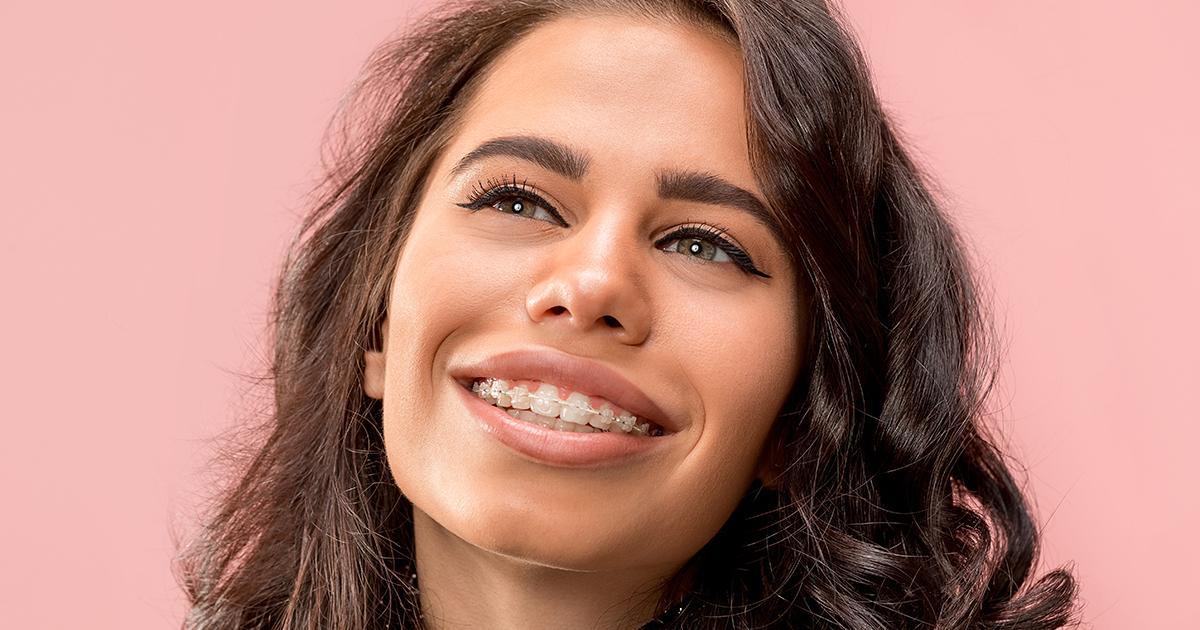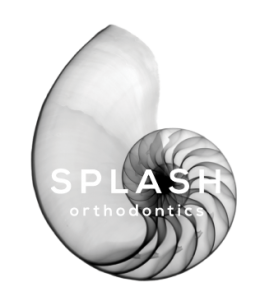How do braces work?
We have several different ways we can straighten teeth, from conventional fixed braces to clear removable aligners. While these appliances may look very different, they all use the same biomechanics to align your smile.

Fixed braces
Traditional fixed braces feature metal brackets and nitinol or stainless steel archwires. The brackets are attached to each tooth and controlled using the archwire, which is held in place by small elastic ligatures or clips that are built into the brackets.
If we use elastic ligatures to secure your archwire, you can choose from a selection of colours to help your braces stand out – or blend in.
Nitinol archwires boast shape memory that’s activated by the warmth of your mouth. Over time, the wire gently straightens, moving your teeth in the process.
We’ll change your archwire periodically to align your teeth little by little. Treatment times vary from months to years, depending on how complicated your case is.
If you’re worried about the appearance of fixed braces, we also offer clear ceramic brackets. They’re much more discreet than their metal counterparts and will blend in with your teeth whatever their shade.
Invisalign
Invisalign is a clever alternative to fixed braces that uses clear aligners to straighten your smile. You’ll wear a series of aligners that will be custom-made to move your teeth.
Before you start your treatment, we’ll show you a digital treatment plan so you can see how each aligner will improve your smile. You’ll also see your projected result. Once we’re happy with your goal, Invisalign will manufacture your aligners using digital scans we take of your teeth and jaws.
Invisalign has proven to be incredibly popular, and there’s an Invisalign brace for everyone. Invisalign Express is perfect for minor tweaks, while Invisalign Comprehensive can tackle the same concerns as fixed braces.
Invisalign is almost invisible, and you’ll have the freedom to remove your aligners for eating, drinking – and, of course, brushing. To see results, you’ll need to wear your aligners for at least 20 hours every day.

How braces move your teeth
Despite looking very different, fixed braces and Invisalign move teeth in the same way – by gently applying pressure to each tooth.
The pressure on your teeth causes the periodontal membrane (the soft tissue that supports your teeth) to stretch and compress, giving your teeth the space they need to move. The alveolar bone then shapes itself around the teeth to support them in their new positions.
It will take a while for everything to stabilise, and during this time, there’s a high risk of your teeth relapsing. We’ll give you retainers to wear when your braces come off. They will hold your teeth straight and avoid any movement.
Once your alveolar bone has stabilised, the periodontal membrane can still put pressure on your teeth, so you’ll need to wear retainers for life.
We include fixed and removable retainers and one year of aftercare for every private patient. NHS treatment currently includes removable retainers and one year of aftercare. If anything happens to your retainers, contact us quickly so we can act before your teeth have a chance to shift.
Can we move teeth faster?
Unfortunately, we can’t rush orthodontic treatment. We need to move teeth gradually to allow all the changes to happen below your gumline. If we move teeth too quickly, it can be uncomfortable, and even lead to root resorption and tooth loss.
There are aligner companies that promise faster orthodontic treatment, but their claims are sadly misleading. Treatment is faster because it focuses on aligning the front teeth and doesn’t change or improve how the back teeth bite together.
If you want to find out how long your transformation could take, contact us to arrange a no-obligation consultation with a specialist orthodontist.

 Hove
Hove 01273 203514
01273 203514


 Read more
Read more

